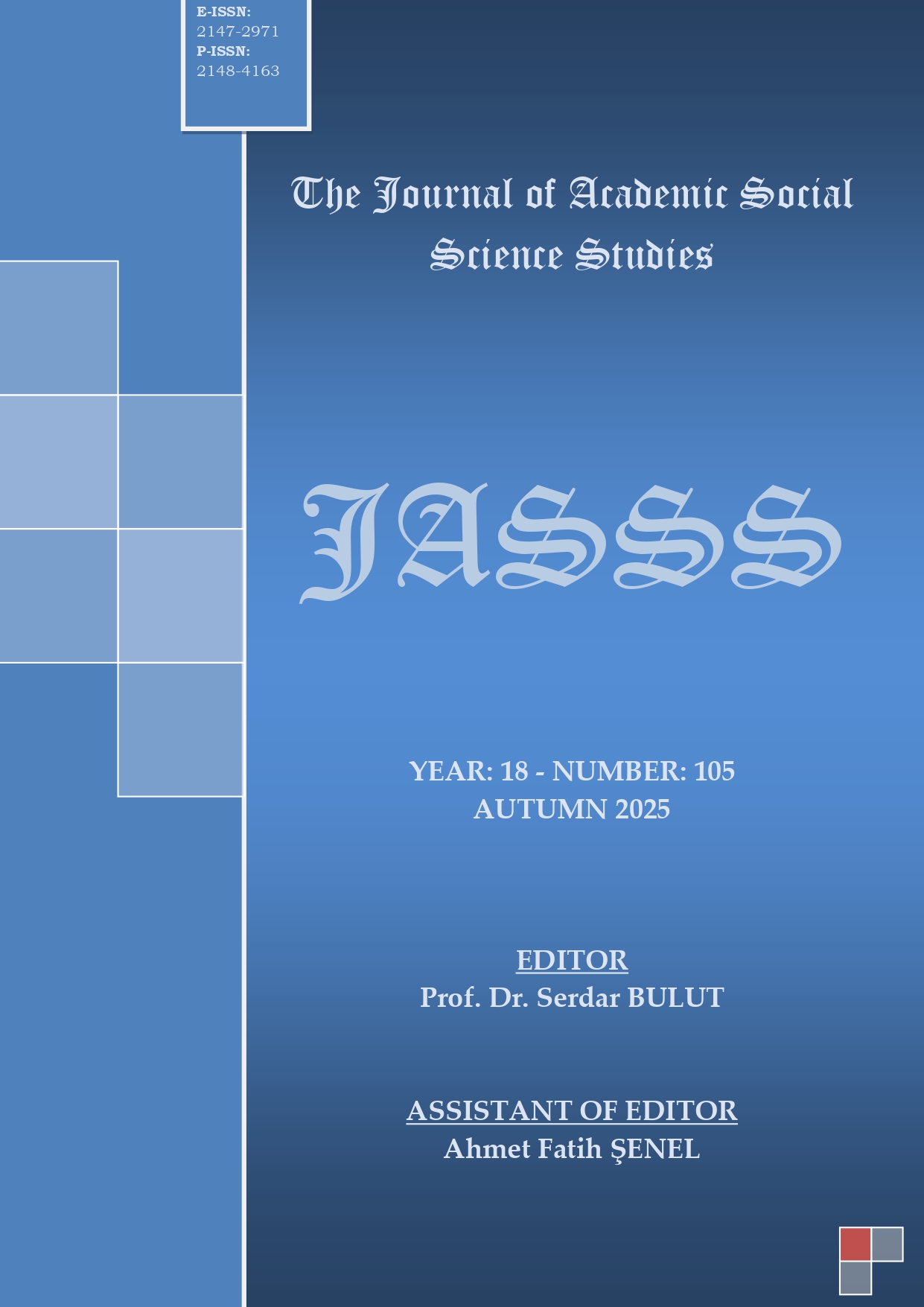Author :
Abstract
Bu çalışma, Kant'ın estetik kuramı çerçevesinde bir müzik eserinin nesnel değerini belirleme ölçütlerine odaklanmaktadır. Kant'ın genel felsefi ilkelerinin müzik eserlerine uygulanabilirliğini incelemek için tümdengelim yaklaşımı kullanılmıştır. Kant'ın estetik kuramının müziğe nasıl uygulanabileceğini göstermek için Igor Stravinsky'nin Bahar Ayini örneği incelenmiştir. Kant'ın estetik yargılarındaki "nitelik", "nicelik", "amaç ilişkisi" ve "modalite" kategorileri müzik eserinin değeri açısından analiz edilmiş, her kategori, estetik yargılar ile müzik arasındaki ilişkiyi vurgulamak için ayrıntılı olarak açıklanmıştır. Yöntem olarak analitik ve karşılaştırmalı bir yaklaşım benimsenmiştir. Kant'ın estetik yargı, duyusal haz, amaçsız amaçlılık ve evrensel zevk gibi temel kavramları ayrıntılı olarak incelenmiş, Stravinsky'nin Bahar Ayini eseri Kant'ın estetik yargı kategorileri merceğinden analiz edilerek müzik yapıları ile estetik deneyim arasındaki ilişkiler açıklanmaya çalışılmıştır. Felsefi karşılaştırma yoluyla, Stravinsky'nin müziksel yaklaşımları, Kant'ın estetik kavramları perspektifinden değerlendirilmiştir. Çalışma, Kant'ın estetik teorisinin modern müziğe nasıl uygulanabileceğini ve modernist müziğin bu bağlamda Kantçı estetik ilkeleriyle nasıl etkileşime girdiğini göstermektedir. Stravinsky'nin Bahar Ayini eseri, klasik biçim ve uyum anlayışını tamamen ortadan kaldırarak Kant'ın güzellik ve haz hakkındaki fikirleriyle çatışmaktadır. Stravinsky'nin müziği, gerilim, çatışma ve belirsizlik yoluyla estetik hazza yönelmesiyle, Kant'ın biçimsel bütünlük, düzen ve uyuma dayalı estetik yargılarının modern müzikte yeniden yorumlanması gerektiğini ortaya koymaktadır. Çalışmanın sonuçları, modernist müziğin Kant'ın estetik kuramının sınırlarını genişlettiğini, sanatın ve estetik deneyimin doğasına dair estetik anlayışı derinleştirdiğini göstermektedir.
Keywords
Abstract
This study focuses on the criteria for determining the objective value of a musical work within the framework of Kant's aesthetic theory. A deductive approach is used to examine the applicability of Kant's general philosophical principles to musical works. In order to show how Kant's aesthetic theory can be applied to music, the example of Igor Stravinsky's The Rite of Spring is examined. The categories of "quality", "quantity", "purpose relationship", and "modality" in Kant's aesthetic judgments are analyzed in terms of the value of the musical work, and each category is explained in detail to emphasize the relationship between aesthetic judgments and music. An analytical and comparative approach is adopted as a method. Kant's basic concepts such as aesthetic judgment, sensory pleasure, purposeless purposefulness, and universal pleasure are examined in detail, and Stravinsky's The Rite of Spring is analyzed through the lens of Kant's aesthetic judgment categories, and the relationships between musical structures and aesthetic experience are explained. Through philosophical comparison, Stravinsky's musical approaches are evaluated from the perspective of Kant's aesthetic concepts. The study shows how Kant's aesthetic theory can be applied to modern music and how modernist music interacts with Kantian aesthetic principles in this context. Stravinsky's The Rite of Spring completely eliminates the classical understanding of form and harmony and conflicts with Kant's ideas about beauty and pleasure. Stravinsky's music, with its orientation towards aesthetic pleasure through tension, conflict, and ambiguity, reveals that Kant's aesthetic judgments based on formal integrity, order, and harmony must be reinterpreted in modern music. The results of the study show that modernist music expands the boundaries of Kant's aesthetic theory and deepens the aesthetic understanding of the nature of art and aesthetic experience.





